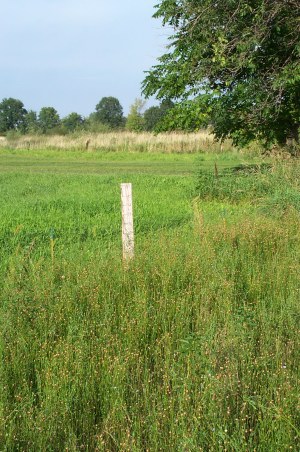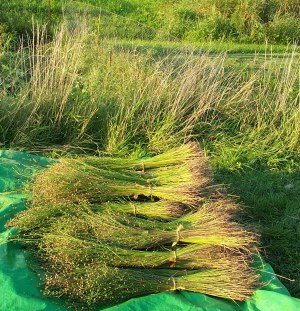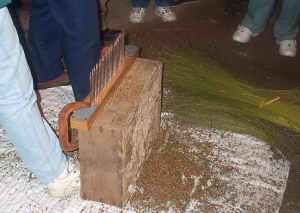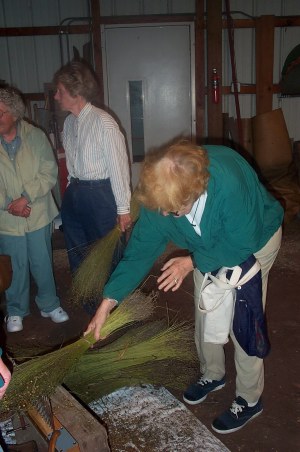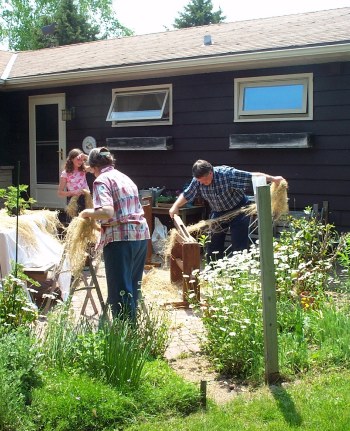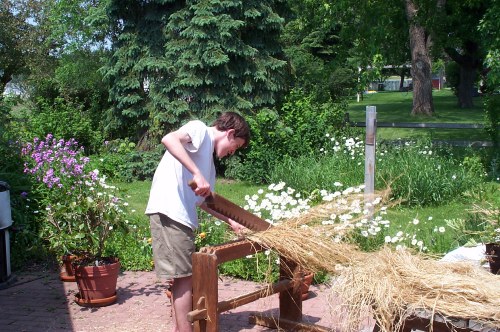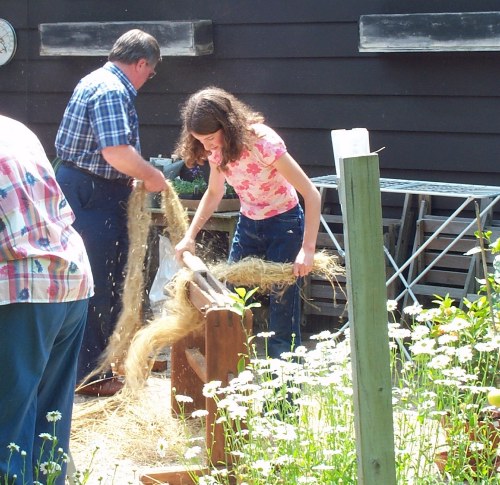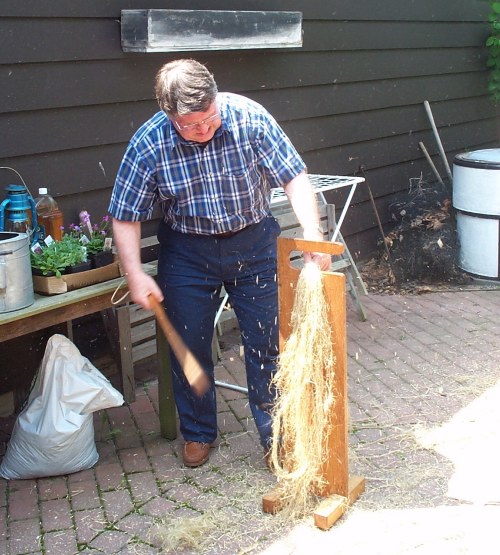| WOOLGATHERERS FLAXCAM | |||||
|
|
|
TABLE OF CONTENTS |
April 21, 2002
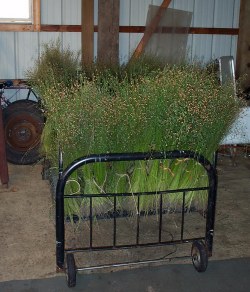 This is the diary of a flax field, planted in May 2001 and harvested in September of that year. The flax crop was dried in a barn in the metal bedstead where it was placed after harvest. Due to family obligations, further processing has been put on hold until now, the spring of 2002. The stages of growth are listed in the links at left.
So far, weather has not permitted sustained garden work - this afternoon we are having what is hopefully the last winter storm of the season. When a warm dry day comes, rippling the seeds will be the next step. From there, retting, breaking and hackling will be pictured when we get a chance to work with the crop. Waiting until the next season is certainly nothing new - once the crop is harvested and dried, it will keep almost indefinitely. I have seen people breaking flax straw, retted about 70 years before.
This year, the place where the flax was planted will be seeded with annual Coreopsis Tinctoria - a prairie plant that produces a good wool dye. Ruth, the nice lady who owns the plot, is a dyer as well, and we are all looking forward to a field of yellow this time. Flax will NOT grow on the same ground the following year, the reasons are not entirely known - the nutrients in the soil are not excessively depleted, yet, as with parsley, something in the structure of the earth or a residue of the flax plant itself, who knows, prevents a new crop for 5 to 7 years. For this reason, it was a part of the old German 7 field crop rotation cycle rather than a shorter one of only 3.
|
|

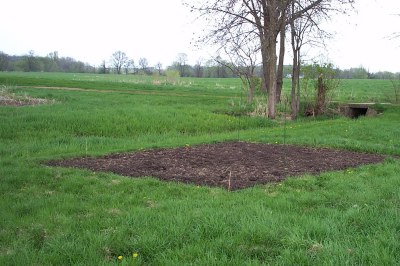 Yes, we're growing flax this year. Seed (2 pounds) is from Landis Valley Museum in Lancaster, PA - they import commercial fiber flax seed from Holland. This year's plot will be 15 by 30 feet - pristine pasture land, not used for a while - it just needs to have the sod removed.
Yes, we're growing flax this year. Seed (2 pounds) is from Landis Valley Museum in Lancaster, PA - they import commercial fiber flax seed from Holland. This year's plot will be 15 by 30 feet - pristine pasture land, not used for a while - it just needs to have the sod removed.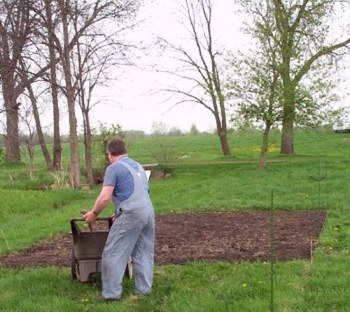


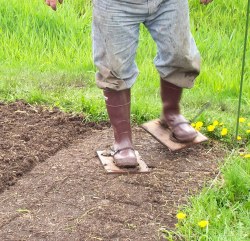
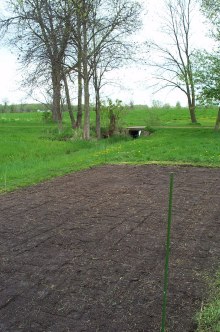
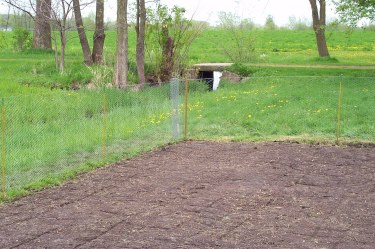
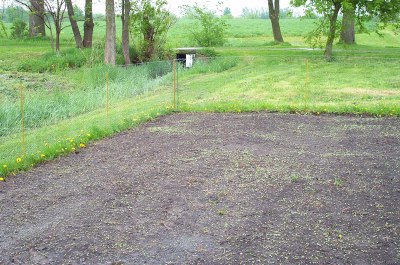

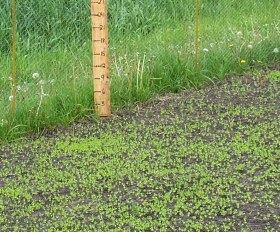
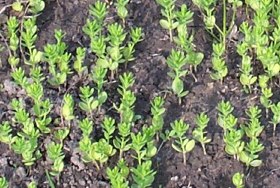 Little plants almost 2 inches high.
Little plants almost 2 inches high.
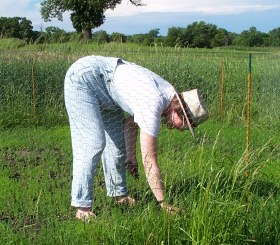

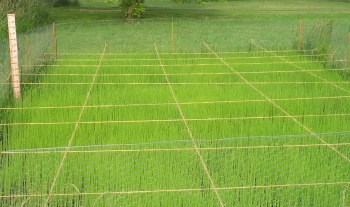
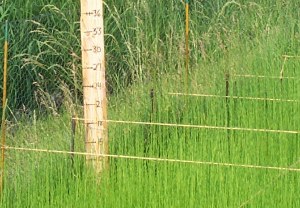
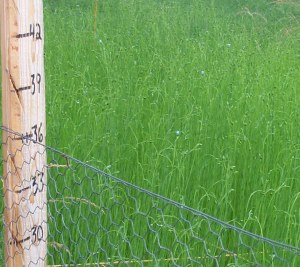
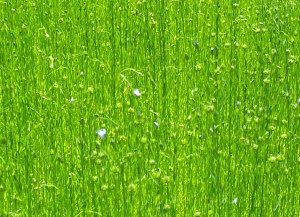
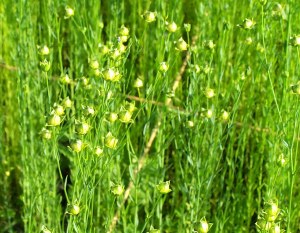
 INTRODUCING RUTH -
INTRODUCING RUTH -
